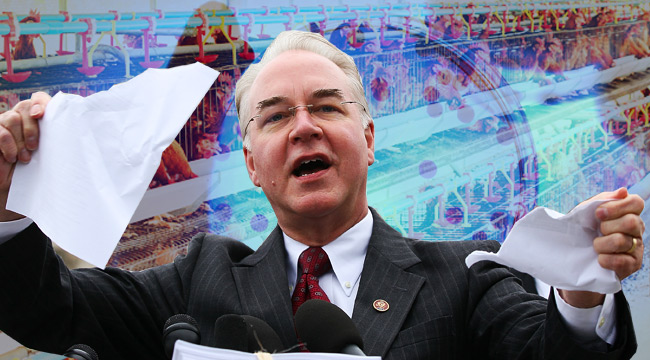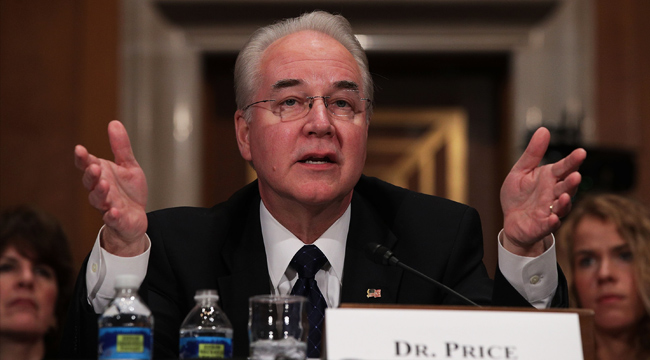
It’s the kind of regulation that has an impact on every single American, as well as the kind you’d imagine everyone would be in favor of. For more than a century, the government apparatus that regulates food safety has served as a watchdog, protecting consumers from both fraud and food poisoning. Not to mention setting everyone straight on the benefits of drinking camel’s milk. Still, there are those that oppose these ideas as over-regulation, unnecessary taxation, and a burden on small businesses.
U.S.-backed food regulations go back to the mid-1800s, but the first sweeping legislation was courtesy of President Theodore Roosevelt who passed the Pure Food and Drug Act and the Meat Inspection Act on the same day in 1906. These were meant to safeguard both public health and push back against consumer fraud, and 21 years later, that mandate was used to form The Food, Drug, and Insecticide Administration, which became the Food and Drug Administration (FDA) in 1930.
Eight years later, The Food, Drug, and Cosmetic Act (FDCA) was passed, which replaced the Pure Food and Drug Act, setting the modern standard for food regulation. It’s still in effect today and is regularly amended so it can maintain its relevance in an ever-changing industry. But with the incoming administration taking shape, many of these regulatory commissions are already in the crosshairs of lawmakers. While the current regulations for food safety in the U.S. are far from ideal, with food-borne illness still a factor today, the idea of eroding these practices instead of finding ways to improve them seems counterintuitive.
Regardless, agencies designed to protect the consumer are under fire, and to get a better understanding of what we may be in for, here’s a look at what it might mean for the future.
The Price Of Deregulation

Despite alerting the public to the presence of things like wood pulp in food, there’s been a steady, concerted effort to deregulate the food inspection process by those who tout privatization dating back to the Reagan administration. This effort can be traced back to the United States Department of Agriculture (USDA), an agency designed to meet the needs of the food producers while also enforcing food safety. Within their department, the office of Food Safety and Inspection Service (FSIS) who act as the USDA’s eyes and ears, and employs more than 7,000 inspectors working across the country.
This is where problems start to arise. The FSIS is entirely separate from the FDA, though the two share a number of similar duties, such as food labeling. However, the FSIS can regulate food from restaurants, whereas the FDA cannot. The FDA’s jurisdiction deals with products like infant formula, dietary supplements, and bottled water while focusing on overall consumer health, while the FSIS takes the lead role in dietary staples like regulating meat, poultry, and eggs.
However, due to the nature of FSIS’s inspection program, known as Pathogen Reduction/Hazard Analysis and Critical Control Points (PR/HACCP), production companies (like slaughterhouses) are asked to come up with their own PR/HACCP plan, which the USDA then approves of and conducts random inspections making sure these precautions are met. This means that the responsibility falls directly on the companies themselves while they’re allowed to setup their own parameters for safety. This also lets them to decide independently if they need to consider diseases like E. Coli or Salmonella as potential threats.
It’s this kind of self-regulation that helps contribute to the 48 million people who get a food-borne illness annually. According to a 2015 report from the Consumer Federation of America (CFA), of those 48 million who get sick, about 130,000 end up in the hospital, and 3,000 end up dead, all of which ends up costing Americans roughly $7 billion each year. Think about hospital costs, the depleting effect of medical debt, missed time from work, and all the other things that come from illnesses that could be lessened through more consistent top-down regulation and enforcement.
While certain legislation was drafted to curb these numbers, namely the Food Safety Modernization Act (FSMA) of 2011, which gave the FDA the ability to recall food products, the CFA traces most of these problems to the current PR/HACCP process. Generally speaking, it’s lax regulatory policies that lead to outbreaks of antibiotic-proof Salmonella, like the one in 2014 that spread across 29 states and affected more than 600 people. Of which, 40% ended up in the hospital.
As Frontline points out, another problem is the generally lax consequences for plants found in violation of their own PR/HCACCP processes. Earlier this year, for example, a number of seafood manufacturers were found to be in violation of their PR/HACCP protocol, all of which were met with little more than a stern letter from the FDA issuing a warning.
To make matters potentially worse, with the increasing frequency of genetically engineered (GE) food products, the USDA has regularly announced deregulation of products, including new strains of corn and apples. The logic being that these GE food products aren’t deemed as a threat to consumers or the environment, rendering any need to regulate it as obsolete, which means a shift from self-regulation to no regulation on certain foods currently on the market.
Where We Go From Here

With the passage of the 21st Century Cures Act in December of 2016, the regulating power of the FDA has been weakened significantly. Now, the FDA’s approval process for bringing new drugs can be drastically expedited to market. It’s a decision that was predictably praised by big pharma, while thoroughly opposed by consumer watchdog groups, fearing that too many under-tested drugs will prove harmful (or worse) to consumers without adequate testing.
Granted, the Cures Act doesn’t extend to the FDA’s jurisdiction on food safety, remember that in September of 2016, then-candidate Trump talked about rolling back food regulations via online press release, mockingly referring to the FDA as the “food police,” and ascribing their authority as both excessive and unnecessary.
The rules govern the soil farmers use, farm and food production hygiene, food packaging, food temperature and even what animals can roam which fields and when. It also greatly increased inspections of food “facilities” and levies new taxes to pay for this inspection overkill.
Trump later removed the statement from his website.
In late November, Trump announced that he had chosen Tom Price as the head of the HHS, a conservative Congressman from Georgia who’s built his political career as a “fierce opponent of government waste.” The real power when it comes to food regulation comes from the USDA. Trump nominated former Georgia Governor Sonny Perdue to take the reins, though he has a history of cutting funding for food inspections — a situation that highlighted how important inspections and standards are.
Trump’s ‘Two for One‘ regulation proposal means that the launch of a new regulation means two existing ones are cut. Additionally, there are caps being proposed that would require any new regulation to be offset by eliminating others, all of which points to there being far fewer hoops for manufacturers to jump through going forward, not to mention far less incentive to do so.
Still, lax regulations or not, no company likes their name being attached to an outbreak of food-borne illness (just ask Chipotle) and they certainly don’t want to face litigation that could deeply punish their bottom line. But while these fail safe’s theoretically exist, inspections and regulations play a critical role as a last line of defense in the effort to protect consumers. Is the current system perfect? Of course not, but to borrow a popular phrase, reform requires a scalpel, not a chainsaw.
